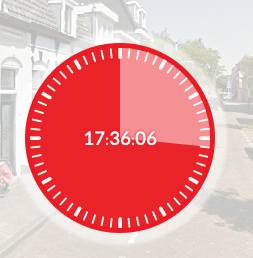Okay, maybe not exactly *hate*, but it comes pretty darn close. I just need to rant about this, so stay with me.
I don’t often do mobile apps (due to the whole “stick with what you know” principle) but every so often I can’t avoid it and, being a web guy, I choose Cordova as my platform. I’m sure there are many advantages to building native apps, but I seriously don’t want to spend the time learning Objective-C, Swift or Android’s take on Java. Spare me. This last week was one of those times, so not having touched Cordova in a fair while I decided I’d give it a spin again.
First, the good news: the project has come a long way. Almost everything can be handled elegantly from the command line, which of course I as a Linux nerd highly applaud. Almost everything would “just work” out of the box, the plugin system has matured and the fact that you need AAPL hardware to even test an iPhone version isn’t their fault at all. So far so good.
So what I normally do is this: I start with laying out the basics in just a local HTML file. Firefox has a great “mobile view” built in, so you can quickly layout your app in general without going through tiresome compile/deploy cycles – just write and let Grunt live-reload your testing page. Sweet.
Of course after a while you need to work with something resembling an actual mobile environment, e.g. because your app is using Cordova plugins. Even sweeter: Firefox still has you covered! Recent versions come with a built-in WebIDE that offers – among a few other things I’ll probably never use – a simulator of a mobile device running FirefoxOS. I don’t think anybody actually uses FirefoxOS in the real world, but at least I have a simulator with familiar debugging tools at zero cost, and deployment is easy enough too (FirefoxOS apps are just zipped local sites, essentially). My versions were acting up a bit but that’s prolly due to the fact that I insist on running Debian Unstable on my desktop, and I managed to get it to work reliably by trying a few different versions.
But then I get to the “actual” version, which should run on iOS and Android (sorry WinPhone, Blackberry and whatnot lovers: this project doesn’t at the moment care about you ;)). Which brings me to reason I find mobile development excruciatingly frustrating:
If you want developers to love your platform, for Pete’s sake make sure your tools don’t suck.
I can’t stress this enough. Let me explain:
I started with Android, since at least I can run it on my Linux machine. The Android SDK comes with an emulator too. Ok, sweet. Only, it’s slower than a turtle with 3 broken legs and the fourth amputated. Seriously Google? This is a machine that happily runs multiple virtual instances of Windows next to each other, and your emulator is so slow it makes me want to chew my balls off? The package manager included seems to download a lot of updates too, but to be fair I hadn’t touched it in months so there will have been quite a few, and it did finish in under an hour. It’s not getting my speed-of-update prize, but it’s doable.
But then I turned to Apple. Oh boy.
Right off: people who know me will know I’m not a Mac fan, quite the contrary. Yes I own an iPhone and an iPad and a MiniMac, but that doesn’t mean I’m particularly fond of them. It just means I think they suck less than Android. In fact, if any carrier will support a FirefoxOS phone any time soon I’m game. But anyway, that’s no excuse to make your tools suck…
So I remote into my MiniMac via VNC. I used to use KRDC for that, but it was dropping the connection for no apparent reason so I switched to TightVNCViewer. Whatever, VNC is VNC. I could basically deploy to the iOS simulator using CLI tools (which was awesome since Xcode also makes me lose the will to live) so everything seemed fine. I had my iPhone hooked up the Mac for charging and was just about to deploy the test version to it, when I noticed there was a new iOS version out, so I figured I’d install that first while I was at it. Y’know, updates are there for a reason and it said “security”.
This was a big mistake.
After the upgrade had completed, the phone refused to charge via the Mac. I checked and it was charging fine on AC, so weird. But I had other stuff to do so I ignored it for a bit. Note: this was yesterday around noon. Around three, I did a bit of Googling and apparently making sure your Mac is also up to date could help solve this. It’s a device connected via USB just to power up. Seriously Apple, who cares about versions? But whatever, the Mac could use an update anyway. So I open the app store and check upgrades and sure enough, there’s some Xcode stuff and an OS update. Fine, I select “upgrade all” and go do something useful.
I got back from something else a few hours later, and the update seems to have finished. Nice. I connect the iPhone and I get a weird message about a developer disk image missing. WTF, I just updated, amirite???? A bit of Googling told me it was indeed a version mismatch (though why the message didn’t just say that and offer to download the correct version is anyone’s guess) so I check the appstore again. Oh, an upgrade for Xcode. Okay, let’s get it over with. Note: these upgrades are a few gigabytes each, and my MiniMac is on wifi. It’s not a particularly fast process. If you’re keeping count: this is the second upgrade to Xcode within 24 hours.
So I let it finish, hook up the phone, same error. I’m about to throw the entire machine through the window when I check the appstore again. Oh, now there’s another OSX update, because it’s obviously too much trouble to just package crap. Fine. I’m getting really annoyed by now, the update is another 7gig but apparently it needs to be done. Pet peeve: when it had finally downloaded and started installing, it warned that it might have to reboot a few times during the upgrade. What the f*ck do you mean “might”? You don’t know? Why the hell not?
Sooooo that eventually finished, I hook up my phone, and you’ve guessed it: same error. Streetwise by now I check the appstore and lo and behold: another XCode update! Of 2 frigging gigabytes. Apple, come on?
Well, nothing to be done, so I download and install it. After what seems like eternity it’s done, I restart XCode and… it needs to download required components! Why the fsck weren’t these in the download in the first place????
It’s now been chugging away at “installing documentation” (isn’t that on your, you know, website?) for over an hour. I think I’m just going to call it a day, but seriously: what the hell are these people thinking? I just want to deploy something to a perfectly fine device, why should the OS need to care about its version? And why, in 2016, can’t you use an efficient package manager like Linux has been doing for over a decade?
Argh.


